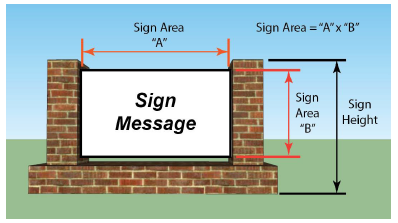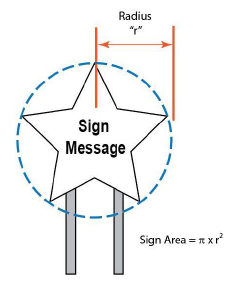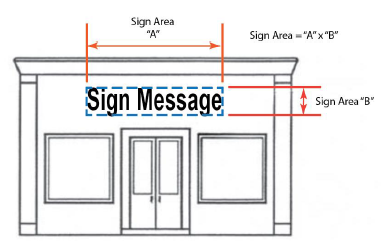(a) Freestanding sign height shall be measured from the average elevation of the finished grade of the road that the sign immediately fronts. Height of sign is measured from the base of the sign and/or structure along the road to the highest point of the sign and/or structure. The use of berms, grading or other means in order to achieve the full allowable sign height shall not be permitted unless site conditions are such that the proposed sign location is below the grade of the adjacent roadway. In such cases, the sign height shall be measured from the adjacent roadway elevation closest to the base of the sign. For signs along waterways, the sign height shall be measured from the base of the sign.
(b) The sign area shall be computed by means of the smallest square, rectangle, triangle or circle that encompasses the extreme limits of the sign message. See Figure 1220-B, Figure 1220-C, and Figure 1220-D.



(c) In the case of a three-dimensional sign where the sign faces are not mounted back-to-back, the sign area shall be calculated by the smallest square, rectangle or circle that encompasses the profile of the sign message and multiplying by two. The profile used shall be the largest area of the sign message visible from any one point.
(d) Except for three-dimensional signs, the sign area for a sign with more than one face (multi-faced signs) shall be computed by adding together the area of all sign faces when the interior angle is greater than 91 degrees.
(e) When two identical sign faces are placed back to back, so that both faces cannot be viewed from any one point at the same time, and when such sign faces are part of the same sign structure and are not more than 24 inches apart, the sign area shall be computed by the measurement of one of the faces. If the two faces are unequal, the sign area shall be calculated based on the larger of the two faces.
(f) All fractions will be rounded to the closest integral number.
(Ord. O2018-02, passed 2-20-2018)